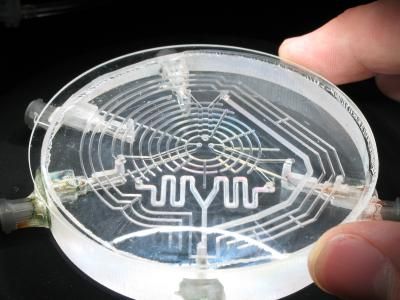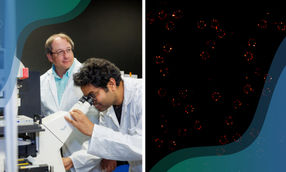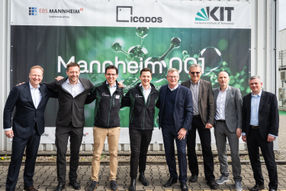Warwick drives forward new bone implant technology for tissue engineering
A method of producing synthetic bone, using techniques normally used to make catalytic converters for cars, is being developed by researchers at WMG at the University of Warwick. The team is now working closely with Warwick Ventures, the University’s technology transfer office, to find a suitable partner to help commercialise the technology.
WMG’s Dr Kajal Mallick is developing the technique along with his postgraduate researcher James Meredith. They strongly believe it could offer substantial clinical benefits to patients undergoing bone implant surgery. The technique involves state-of-the-art extrusion of the implant material through a mould, to produce a 3-dimensional honeycomb texture, with uniform pores throughout. The material can then be sculpted by the surgeon to precisely match the defect. After implantation bone cells will be transported into the implant and begin to form new bone.
“We worked with a Japanese company which manufactures catalytic converters and used their facility to produce samples which we could then test in the laboratory,” explains Dr Mallick. “We found that we were able to use calcium phosphates – a family of bioceramics that are routinely used in bone implant operations, but by using this technique we were able to improve significantly both the strength and porosity of the implant.”
Dr Mallick added: “At the present time, there is no product available in the market place that satisfies both these key properties simultaneously. It is nearly an ideal scaffold structure for efficient blood flow and formation of new bone cells.”
The increased strength of the material means it could be used in spinal surgery, or in revision hip and knee operations, where currently non-degradable materials such as titanium or steel may be used. The advantage of increased and interconnected porosity is that the implant can quickly be filled with blood vessels, resulting in a more rapid healing process.
Most read news
Topics
Organizations
Other news from the department science

Get the life science industry in your inbox
By submitting this form you agree that LUMITOS AG will send you the newsletter(s) selected above by email. Your data will not be passed on to third parties. Your data will be stored and processed in accordance with our data protection regulations. LUMITOS may contact you by email for the purpose of advertising or market and opinion surveys. You can revoke your consent at any time without giving reasons to LUMITOS AG, Ernst-Augustin-Str. 2, 12489 Berlin, Germany or by e-mail at revoke@lumitos.com with effect for the future. In addition, each email contains a link to unsubscribe from the corresponding newsletter.
Most read news
More news from our other portals
Last viewed contents
David_S._Sheridan

Natural molecule found to inhibit hepatitis C virus replication - A team led by the CSIC shows that the nucleoside guanosine, a substance present in human cells, alters the virus machinery and prevents its propagation.
Bioxyne reports the results from the Phase IIb COPD study
New genetic marker makes fruit fly a better model for the study of neuronal development and human brain disorders
Tyrosol
CHEMIE.DE gives technological support for the launch of a food and beverages internet portal - The new B2B web portal yumda.de builds on the proven technology of Europe's leading chemistry portal
Pall Corp. Completes Acquisition of ATMI LifeSciences






















































